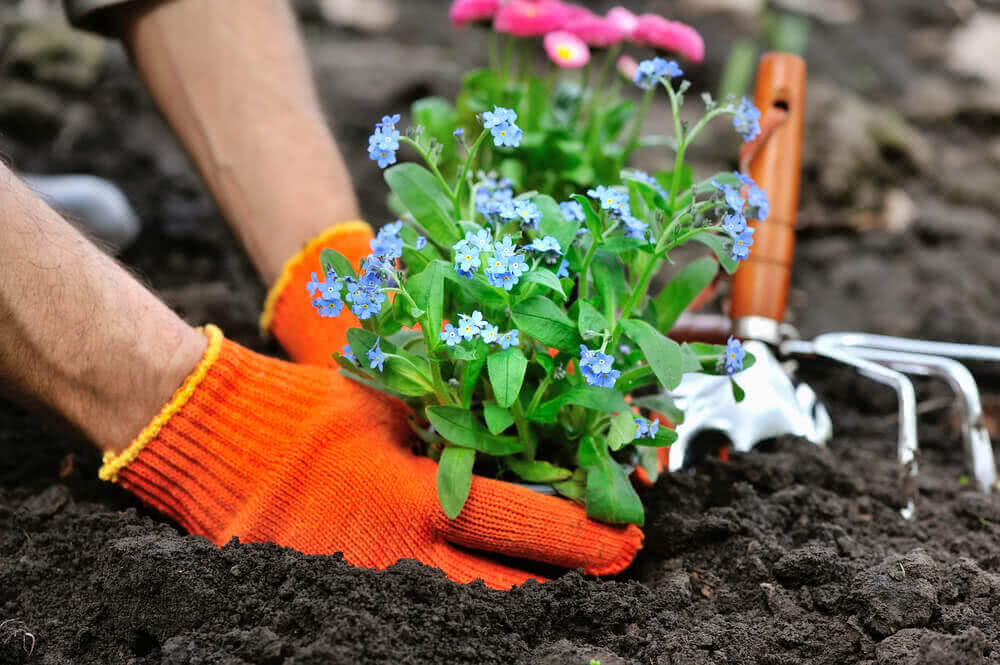The Comprehensive Guide to Gardening: Discover the Benefits of Different Designs and Methods
Horticulture incorporates a varied range of designs and methods, each offering one-of-a-kind benefits tailored to specific choices and environmental contexts. From the organized elegance of formal yards to the organic charm of permaculture, understanding these variations is vital for cultivating a room that not only grows however additionally reflects individual values and looks. In addition, lasting techniques play a crucial duty in enhancing local ecological communities and ensuring long-term success. As we check out these different styles, it becomes noticeable that the selections made can substantially influence both the garden's wellness and its payment to the surrounding atmosphere.
Comprehending Gardening Essentials
Recognizing the basics of gardening is crucial for cultivating a prospering and lasting yard. A successful gardening venture starts with a solid structure of knowledge pertaining to soil, plant choice, and environment factors to consider.
Picking the right plants is just as important. Comprehending their details needs-- such as sunshine, water, and spacing-- makes certain compatibility with the local climate and dirt problems. This choice procedure need to likewise consider the development routines and lifecycle of plants, enabling for a well balanced and visually pleasing yard.
In addition, effective sprinkling practices are critical. Over-watering and under-watering can both cause plant stress and disease. Carrying out a schedule based upon seasonal adjustments and plant demands can improve water performance.
Popular Gardening Styles
What defines the essence of preferred horticulture styles? These styles encapsulate diverse visual concepts, useful demands, and environmental considerations, ultimately mirroring the garden enthusiast's personal vision. Amongst the most popular designs is the home garden, characterized by its informal layout and a vibrant variety of flowers and veggies. This method stresses a harmonious mix of shade and appearance, producing an inviting environment.
On the other hand, the formal garden embodies symmetry and order, typically featuring geometric patterns and meticulously cut bushes. This style connects beauty and class, with thoroughly picked plants that strengthen a structured aesthetic.
The Japanese garden offers a calm and reflective experience, making use of natural environments like water, stones, and plants to produce a peaceful setting. It concentrates on simpleness and balance, encouraging contemplation.
Additionally, xeriscaping has actually gotten appeal, specifically in deserts (Gardening). It focuses on drought-resistant plants and efficient water use, promoting sustainability while enhancing landscape elegance
Advantages of Container Horticulture
Container horticulture provides a wide variety of benefits that make it an enticing option for both amateur and knowledgeable gardeners alike. Among the main advantages is adaptability; containers can be put in numerous places, enabling garden enthusiasts to enhance sunshine exposure and develop visually attractive arrangements. This flexibility makes it possible to garden precede where typical in-ground horticulture might not be feasible, such as balconies, outdoor patios, or metropolitan atmospheres.
Furthermore, you could check here container horticulture gives far better control over dirt problems. Gardeners can personalize the dirt mix to match details plants, ensuring ideal drain and nutrient schedule. This is especially advantageous for individuals residing in locations with bad or polluted soil.
An additional significant advantage is the lowered risk of bugs and diseases. Container plants can be monitored a lot more easily, and any kind of issues can be resolved immediately. This strategy can reduce the spread of intrusive species.
Lasting Gardening Practices
Lasting horticulture practices are crucial for advertising ecological wellness and improving biodiversity in our ecological communities. These methods focus on ecological equilibrium, source conservation, and the usage of organic techniques to minimize adverse environmental influences. By employing strategies such as composting, gardeners can lower waste while enhancing soil health and wellness, thereby cultivating a prospering garden ecological community.
Water preservation is an additional critical facet of sustainable horticulture. Methods such as rainwater harvesting, drip watering, and the usage of drought-resistant plants can substantially decrease water usage while ensuring that plants get appropriate wetness. Integrating indigenous plant varieties right into garden layouts supports neighborhood wild animals and reduces the demand for chemical plant foods and chemicals, which can be harmful to the environment.

Eventually, lasting gardening practices not just add to healthier gardens yet also promote an even more resilient atmosphere, providing lasting benefits to both the garden enthusiast and the surrounding neighborhood.
Tips for Successful Horticulture
To cultivate a successful yard, gardeners need to prioritize mindful Continue planning and thoughtful implementation of their gardening methods. Begin by evaluating the local environment and soil problems, as these elements significantly influence plant choice and development. Choose plants that are appropriate to your setting, considering native varieties that will grow with marginal intervention.
Implementing a well-structured layout is crucial (Gardening). Use friend growing techniques to advertise biodiversity and all-natural bug control, while making certain each plant has appropriate space for development. This not only enhances looks however additionally enhances overall plant health
Normal upkeep is crucial to an effective garden. Establish a regular routine for watering, weeding, and fertilizing. Mulching can assist preserve dampness and subdue weeds, while also adding raw material to the dirt.
Regularly checking plant wellness and development Click This Link will permit for timely interventions. Be open to learning and adjusting; horticulture is a constant procedure that profits from experience and testing.
Conclusion

In recap, the expedition of diverse horticulture styles and strategies discloses their complex benefits, adding to both visual allure and ecological health. Container horticulture provides flexibility and accessibility, while sustainable practices boost environmental stewardship. By incorporating different techniques and techniques, gardeners can maximize their efforts, advertise biodiversity, and create useful outdoor rooms. Ultimately, this thorough guide functions as an important source for cultivating effective gardening experiences, promoting a much deeper connection with nature and the bordering environment.